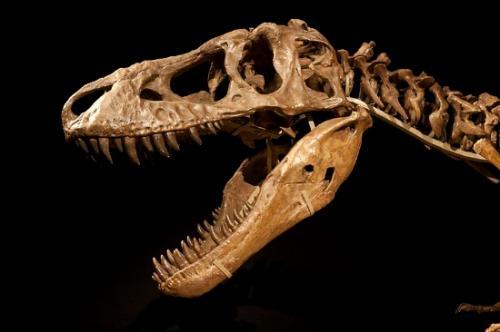 Since May, Mongolian officials, a fossil dealer, federal agents and
Since May, Mongolian officials, a fossil dealer, federal agents and
paleontologists have been tussling over
a million-dollar
dinosaur.
And the story of this Tarbosaurus keeps getting more complicated.
When the tyrant was sold by Heritage Auctions, the dinosaur was advertised
as being about 75 percent complete. But, according to a court hearing earlier this
month, only about fifty percent of the reconstruction came from a single
animal. The rest apparently came from any number of other dinosaurs. Eric
Prokopi–the dealer who imported, mounted and tried to sell the dinosaur–has not
provided any information about where all these fossils came from.
To date, Tarbosaurus skeletons have only been discovered in
Mongolia. The color and preservation of the bones of the specimen in question
indicates that the primary individual used to make the reconstruction came from
that country. But the admission that the dinosaur is an amalgamation of several
dinosaurs–all of undocumented origin–complicates the Mongolian government’s claim
to the dinosaur. Who knows what kind of monster Prokopi created in his effort
to create a salable specimen?
And the lack of paperwork has further marred the case. Upon hearing that
experts believe that the Tarbosaurus at the center of the mount could
only have come from Mongolia, U.S. District Judge P. Kevin Castel offered his
opinion that the dinosaur could have been found outside Mongolia simply because
“We’re finding new things all the time.” It would seem that Castel fancies
himself an amateur paleontologist.
This ever-more frustrating case highlights the problematic nature of the
fossil black market. All too easily, fossils are poached and shipped around the
world without documentation. Should they ever become the subject of an attempt
to send the fossils back home, as in this case, the shady dealings of
irresponsible commercial dealers hinders attempts to figure out where the
fossils came from, much less return a country’s natural heritage.
No one knows what might happen next. The fact that the Tarbosaurus
was a “Frankenstein” of many dinosaurs complicates the case, yet the bulk of
the evidence indicates that the core of the mount–the 50 percent from a single Tarbosaurus
individual–is an illicit specimen that was smuggled into the United States. For
now, though, all we can do is wait. The case is set to resume in December.
http://blogs.smithsonianmag.com
 3,575.44
3,575.44







